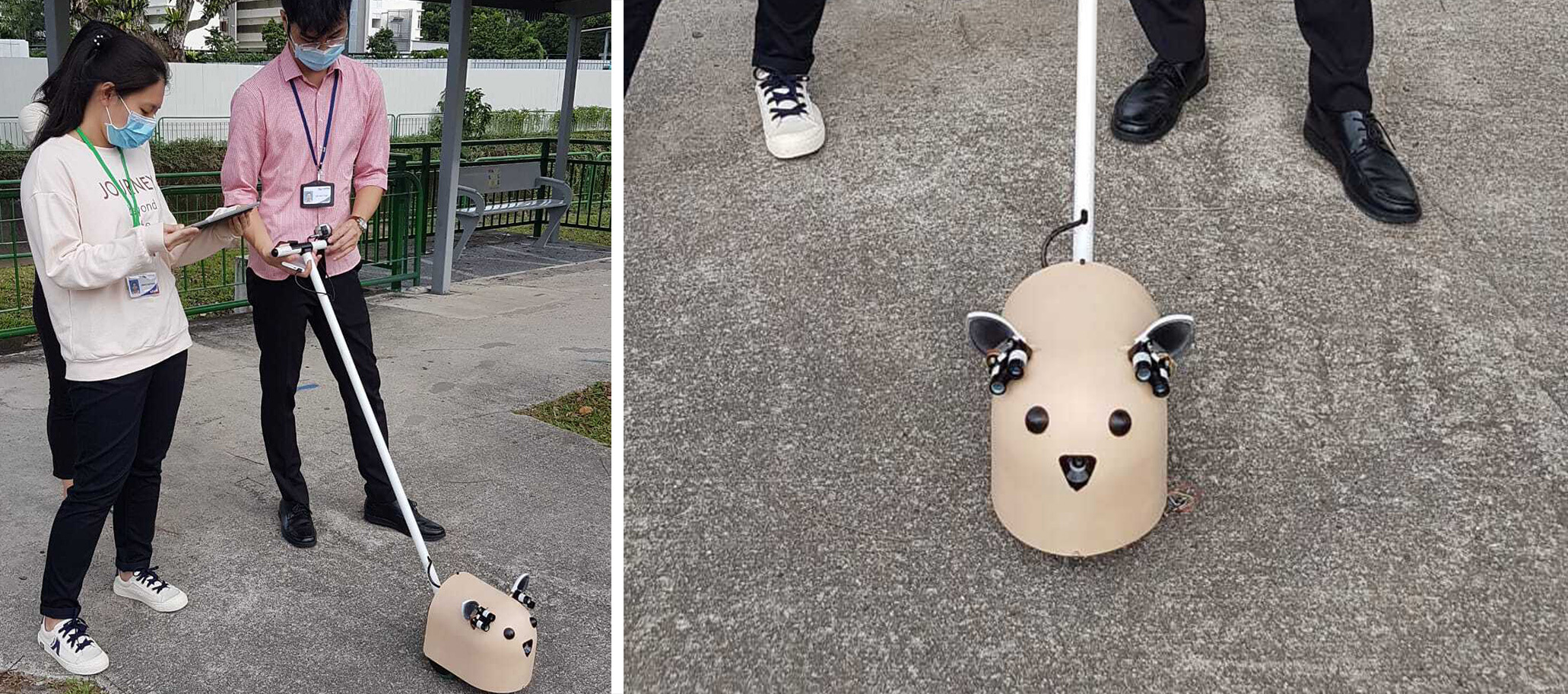Problem Statement
Independent traveling methods that Persons with Visual Impairment (PVI) adopts currently poses various issues and challenges.
Guide dogs are extremely costly to obtain and care for; the process of obtaining one can take up to a year or more depending on availability and other factors. Other conventional independent traveling methods e.g. O&M training via the white cane, is memory intensive and might cause difficulties to many when tasked to locate "narrow" landmarks.
Solution
Development of e-guide dog (E-GD) to address the issues faced by PVIs pertaining to independent traveling.
The E-GD can perform the same duties of the real GD in guiding the PVI to go around obstacles to achieve safe and independent travel for the user via a navigation system that can measure direction and distance accurately.
The E-GD also improves upon the traditional landmark travel method by providing direction guidance and accurate position data to guide the PVI to each landmark location in both outdoor and indoor environments using distance measured by physical wheel on the E-GD and direction from digital compass.
Outcomes
E-GD will address the issues that PVIs faced pertaining to independent travelling and replace their current traveling methods for a better independent travelling experience.
-
Grantee
Nanyang Polytechnic -
Beneficiaries
Persons with Visual Impairment
more about grantee
The project team is led by Dr Kong (Nanyang Polytechnics) who is a computer engineer by training. Together with him are 3 other Co-PIs that specialize in area of electronic engineering, software development, robotics and control system. One of the PI, Tan Hwei Lan, is also a founding member and Board of Directors of Guide Dogs Singapore.

